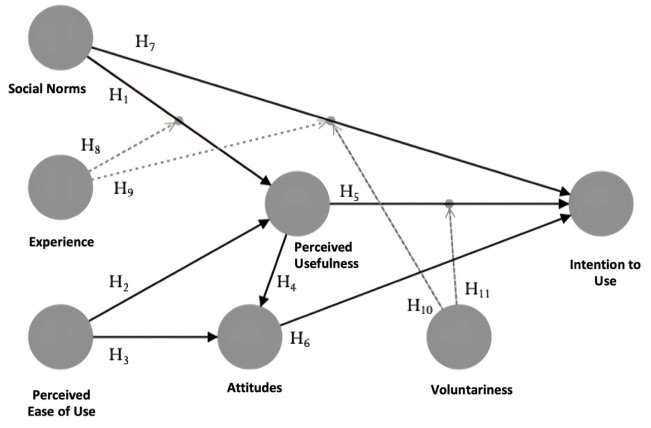Report on AI in Inclusive Education and its Alignment with Sustainable Development Goals
Introduction and Research Overview
A provisionally accepted research manuscript, slated for publication in Frontiers in Artificial Intelligence, investigates the acceptability of Artificial Intelligence (AI) within the framework of inclusive education. The study, conducted by researchers from the University of Hassan II Casablanca and Ecole Normale Supérieure Casablanca in Morocco, utilizes the Technology Acceptance Model 2 (TAM2) to analyze the perceptions of future teachers. This research is pivotal as it examines the critical human factors influencing the adoption of AI-driven educational tools, thereby connecting artificial intelligence, educational technology, and teacher training. The study’s focus on the societal impact and adoption of AI in human-centered contexts directly supports multiple United Nations Sustainable Development Goals (SDGs).
Primary Alignment with SDG 4: Quality Education
The research makes a significant and direct contribution to SDG 4, which aims to ensure inclusive and equitable quality education and promote lifelong learning opportunities for all.
- Target 4.5: Eliminate Disparities in Education: By focusing on “inclusive education,” the study addresses the core of this target. AI-driven tools have the potential to provide personalized learning paths and support for students with diverse needs, including those with disabilities, thereby helping to eliminate disparities and ensure equal access.
- Target 4.c: Increase the Supply of Qualified Teachers: The research centers on the perceptions of “future teachers.” Understanding their acceptance of and readiness for new technologies is fundamental to developing effective teacher training programs. Equipping educators with the skills to leverage AI effectively is crucial for enhancing the quality of teaching and learning in the 21st century.
Contributions to Interconnected Sustainable Development Goals
Beyond its primary focus on education, the study’s implications extend to several other SDGs, highlighting the interconnected nature of the 2030 Agenda.
-
SDG 10: Reduced Inequalities
The manuscript’s emphasis on inclusive education directly supports the goal of reducing inequalities within and among countries. By exploring technologies that can be adapted to individual learning requirements, the research promotes educational equity, which is a cornerstone for creating more inclusive and just societies.
-
SDG 9: Industry, Innovation, and Infrastructure
This research is situated at the intersection of innovation and its societal application. It contributes to SDG 9 by:
- Investigating the adoption of advanced technology (AI) in a critical public sector (education).
- Analyzing the “human factor” in technological implementation, which is essential for building resilient and sustainable infrastructure and fostering innovation that serves society effectively.
-
SDG 8: Decent Work and Economic Growth
By improving the quality and inclusivity of education through AI, this research indirectly supports SDG 8. A well-educated populace, equipped with modern skills, is essential for sustained economic growth and the creation of decent work opportunities. Training teachers to use AI tools prepares both them and their future students for the evolving demands of the global workforce.
Conclusion
The research on the acceptability of AI in inclusive education provides critical insights that are essential for advancing the Sustainable Development Goals. By bridging the gap between technological innovation and practical application in teacher training, the study underscores the importance of a human-centered approach to technology adoption. Its findings will be instrumental for policymakers, educators, and technologists working to harness AI for the betterment of society, ensuring that progress in artificial intelligence translates into tangible advancements in quality education (SDG 4) and reduced inequalities (SDG 10).
Relevant Sustainable Development Goals (SDGs)
Based on the article’s content, the following SDGs are addressed:
-
SDG 4: Quality Education
The article directly addresses this goal by focusing on “AI in Education,” “inclusive education,” “teacher training,” and the use of “AI-driven educational tools.” The research aims to improve educational methods and accessibility, which is the core mission of SDG 4.
-
SDG 9: Industry, Innovation, and Infrastructure
The research on “Artificial Intelligence,” “educational technology,” and “AI Innovations in Education” connects to this goal. It represents an effort in scientific research and technological innovation, particularly in a developing country context (Morocco), which aligns with the goal of enhancing technological capabilities.
-
SDG 10: Reduced Inequalities
The specific mention of “inclusive education” highlights a commitment to reducing disparities in educational access and quality. By exploring tools that can support inclusive learning environments, the research contributes to the broader goal of promoting the inclusion of all individuals, as championed by SDG 10.
Specific SDG Targets
The article’s content points to several specific targets under the identified SDGs:
-
SDG 4: Quality Education
- Target 4.5: “By 2030, eliminate gender disparities in education and ensure equal access to all levels of education and vocational training for the vulnerable…” The article’s central theme of “inclusive education” directly supports this target by investigating technologies designed to provide equal access for all learners.
- Target 4.a: “Build and upgrade education facilities that are child, disability and gender sensitive and provide safe, non-violent, inclusive and effective learning environments for all.” The exploration of “AI-driven educational tools” is aimed at creating more “effective learning environments” and is a key part of upgrading educational infrastructure for the modern era.
- Target 4.c: “By 2030, substantially increase the supply of qualified teachers, including through international cooperation for teacher training in developing countries…” The study focuses on “future teachers’ perceptions” and “teacher training,” which is critical for ensuring that educators are qualified and equipped to use new technologies effectively.
-
SDG 9: Industry, Innovation, and Infrastructure
- Target 9.5: “Enhance scientific research, upgrade the technological capabilities of industrial sectors in all countries, in particular developing countries…” The article itself, being an “ORIGINAL RESEARCH article” from a Moroccan university on “AI Innovations,” is a direct contribution to enhancing scientific research and technological capability in a developing country.
-
SDG 10: Reduced Inequalities
- Target 10.2: “By 2030, empower and promote the social, economic and political inclusion of all…” By focusing on the tools and teacher acceptance necessary for “inclusive education,” the research contributes to the social inclusion of all students, regardless of their background or abilities, within the educational system.
Implied Indicators for Measuring Progress
While the article does not state explicit numerical indicators, it implies several metrics that can be used to measure progress towards the identified targets:
- Level of acceptability of AI tools by teachers: The article states that the study explores “the acceptability of AI in inclusive education through the TAM2 framework.” The Technology Acceptance Model (TAM2) is a tool to measure user acceptance. Therefore, the measured perceptions and acceptance levels of future teachers serve as a direct indicator of readiness and progress towards integrating new technologies (relevant to Target 4.c).
- Rate of adoption of AI-driven educational tools: The research on the “adoption of AI in human-centered contexts” implies that the rate at which these tools are implemented in schools is a key indicator. This would measure the practical application of technology to create inclusive learning environments (relevant to Target 4.a).
- Number of research publications on AI in education: The article itself is a “RESEARCH article” and part of a “Research Topic” on “AI Innovations in Education.” The volume of such research, especially from developing countries, can serve as an indicator of enhanced scientific research and innovation in the field (relevant to Target 9.5).
SDGs, Targets, and Indicators Analysis
| SDGs | Targets | Indicators (Implied from the article) |
|---|---|---|
| SDG 4: Quality Education |
|
|
| SDG 9: Industry, Innovation and Infrastructure |
|
|
| SDG 10: Reduced Inequalities |
|
|
Source: frontiersin.org







